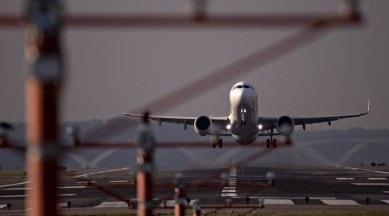DGCA flags recent snags, gives airlines 10 days to plug gaps
In an order on Monday, the regulator has also pointed to an “increasing trend” of minimum equipment list (MEL) releases of aircraft.

Airlines are improperly identifying causes of reported defects on aircraft, and are not placing qualified engineers at all airports — spot checks by India’s aviation safety regulator have revealed. The Directorate General of Civil Aviation (DGCA) had conducted surprise inspections of airlines in light of the increasing “engineering related occurrences in scheduled airlines in recent times”.
In an order on Monday, the regulator has also pointed to an “increasing trend” of minimum equipment list (MEL) releases of aircraft. An MEL allows the plane to be operated safely even if something is broken on the plane only under specific conditions or for a restricted flight duration before it has to compulsorily undergo maintenance. For example, if a landing light is broken, the aircraft may be allowed to fly during day time.
Notably, the order was issued a day after Minister of Civil Aviation Jyotiraditya Scindia took a meeting with the senior Ministry and DGCA officials to take stock of the rising safety incidents in the country. At the Sunday meeting, Scindia “re-emphasised to strictly adhere to the prescribed safety norms and avoid any kind of laxity towards passenger safety”. Scindia also met several top airline executives on Monday to underscore the importance of air safety.
“It is also seen that airlines are resorting to frequent one-off authorisation to Category A certifying staff at transit stations, which is not in line with existing regulatory provisions. Keeping the above in view, it has been decided that all aircraft at base and transit stations shall be released by certifying staff holding AME Category B1/B2 licence with appropriate authorisation by their organisation,” the DGCA order noted.
This assumes significance because before every flight takes off, a licenced aircraft maintenance engineer (AME) inspects the aircraft and releases it if everything is in order. There are various categories of AME licences, and the Category A licence is given to technicians who are permitted to maintain the aircraft under certain limits. The Category B licences are more specialised and equip AMEs to deal with intricate components such as engines, wings, etc.
According to the regulator, airlines have not been posting the relevant qualified engineers at all the stations with the Category A licence holders releasing aircraft at some of the smaller airports. “You are advised to position certifying staff (AME Category B1/B2 licence) at all base and transit stations, including availability of required tools and equipment. Alternatively, you may opt for sending the certifying staff on flight duties,” the order read, asking the airlines to comply by July 28.
Multiple incidents were reported to have occurred on aircraft operated by Indian carriers over the last few days from engine snags and burning smell in cabin to a bird entering the airplane cockpit.
Indian carriers have been plagued by technical snags over the last one month. Multiple incidents were reported to have occurred on aircraft operated by Indian carriers over the last few days from engine snags and burning smell in cabin to a bird entering the airplane cockpit. In the early hours of Sunday, an IndiGo-operated Airbus A320neo plane on its way from Sharjah to Hyderabad diverted to Karachi after pilots were notified of an engine fault in the aircraft’s right engine.
Prior to this incident, an Air India Express plane from Kozhikode to Dubai diverted to Muscat in Oman on Saturday after burning smell was observed in one of the vents in the Boeing 737-800 aircraft’s forward galley. On board another Air India Express plane on its way from Bahrain to Kochi on Friday, a live bird was found in the cockpit of the Boeing 737-800 plane in the glove compartment of the co-pilot, while the plane was cruising at 37,000 feet.
Low-cost airline SpiceJet saw at least eight incidents in less than a month, and the regulator issued a show-cause notice to the airline, saying it had “failed” to establish safe, efficient and reliable air services. One of SpiceJet’s Dubai-bound planes had made a diversion to Karachi too last month after pilots discovered a technical snag.